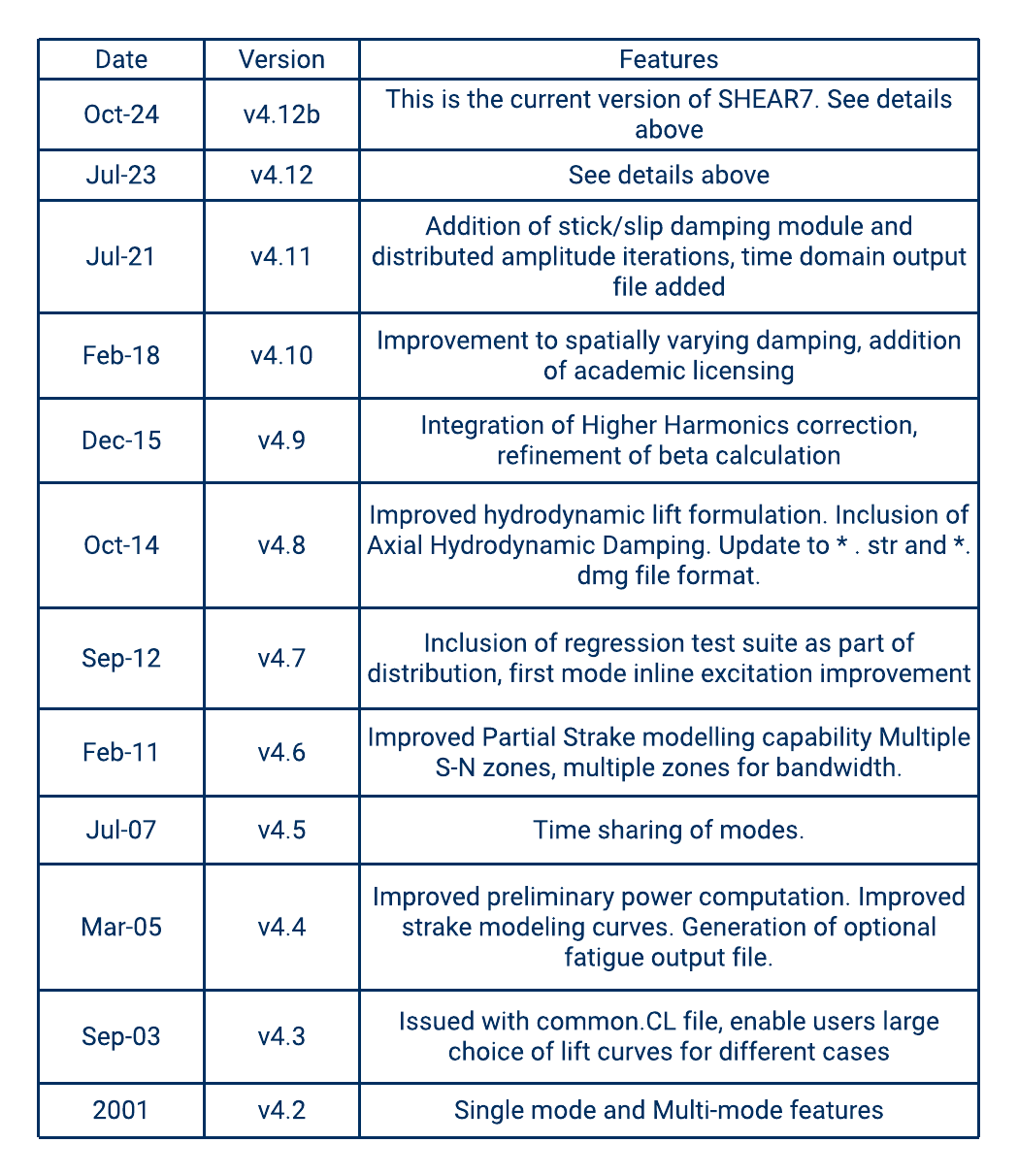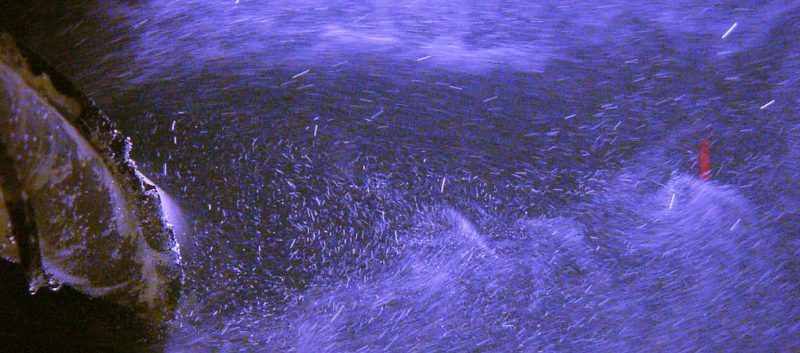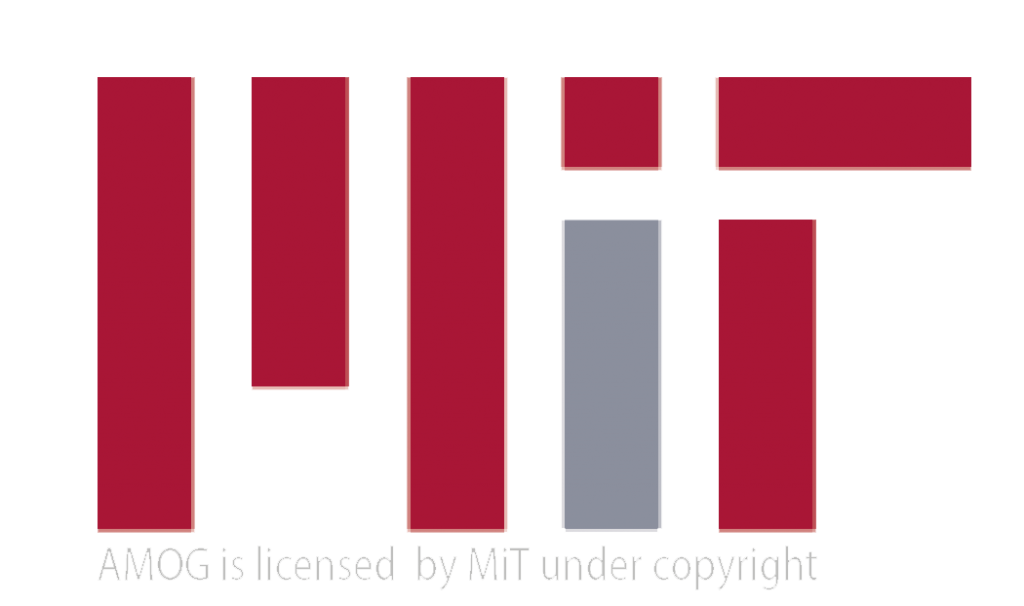Development Path
SHEAR7 undergoes constant development to meet the needs of the industry. This development is a result of the industry driven requirements, the implementation of results of experiments and research being conducted around the world, in particular that of the SHEAR7 JIP.
Shear7 Technology
SHEAR7 is the offshore industry’s leading software tool for the prediction of Vortex-Induced Vibration (VIV) with close to twenty years of industry use and continuous development. The program’s forte is the VIV response prediction of offshore structures subjected to spatially varying currents; realistic of ocean environments. The program enables users to estimate structural responses, drag force amplification factors and predict fatigue damage. SHEAR7 couples to other offshore system modelling tools such as Orcaflex and Flexcom enabling VIV assessment through the front end of these packages. It is simple and fast to run with all the results summarized in a convenient standard output file.
SHEAR7 is used throughout the world by engineers in Australia, Brazil, China, Denmark, France, India, Japan, Korea, Malaysia, Norway, Spain, UK and USA.
SHEAR7 v4.12b was released in October 2024. Program enhancements included:
Theoretical Improvements
- Adjustment of Power Zone Amplitude Limit value in example files
- The Power Zone Amplitude Limit value has been adjusted from 0.3 to 0.65 in the example files.
- The Power Zone Amplitude Limit default value has been adjusted from 0.3 to 0.65 in the example files. The reasoning to change this default value is outlined in the User Guide.
Other Improvements
- Inclusion of optional curvature time history output file, *.s7cth
- Added clearer error for non-existent input files. If an input *.s7dat cannot be resolved by SHEAR7 to an existing file, an output error code 74 will be written to a *.s7out of the same name
- Changes to SHEAR7 uninstaller to prevent removal of non-installation related files on uninstall
- Addition of SHEAR7 icons to allow easy identification of SHEAR7 files and executable
- Added official support for Windows 11*
*Please note that Windows 8 official support has been discontinued
Bug Fixes
- Added an input check on the hydrodynamic diameter value to output an appropriate error if it isn’t greater than 0. This prevents the program crashing during calculations.
- Time history generation can no longer be enabled when calculation of fatigue with zero-crossing method is also enabled, as this leads to invalid results.
Academic License
- The academic licence contains all changes above, subject to the restrictions detailed in the User Guide. Please contact the SHEAR7 Support Team for additional information on the Academic License, including license terms.
Please refer to the updated SHEAR7 User Guide (which can be dowloaded using the button on the home page) for more information on updates included in the v4.12b release.
SHEAR7 v4.12 was released in July 2023. Program enhancements included:
Theoretical Improvements
- A new lift table for high Reynold’s number has been developed for High Reynolds numbers and included in the new Lift Table file.
- The Order that Power Zone Amplitude Limit (PZAL) And Power Cutoff are applied by SHEAR7 have been reversed (details for this change are provided in the User Guide).
Processing Enhancements
- Inclusion of optional displacement time history output file *.s7dth
Bug Fixes
- The stress range within the stress time history (.s7sth) output file was twice that within the other SHEAR7 output files (.s7out section 15.1 and 15.4, .s7plt, and .s7str).
- Diameter units incorrectly converted for the c* calculation when using English Units.
- When specifying the calculation option (block 5 line 1) in an input .s7dat file, a filename should only be required for calculation option 3, a unique-name.mds. The SHEAR7 input file parser incorrectly requires a filename to be provided after the calculation option number and causes an input error to be raised if not provided.
Academic License
- The academic licence contains all changes above, subject to the restrictions detailed in the User Guide. Please contact the SHEAR7 Support Team for additional information on the Academic License, including license terms.
Refer to the updated SHEAR7 User Guide for more information on updates included in the v4.12 release.
Other Versions




